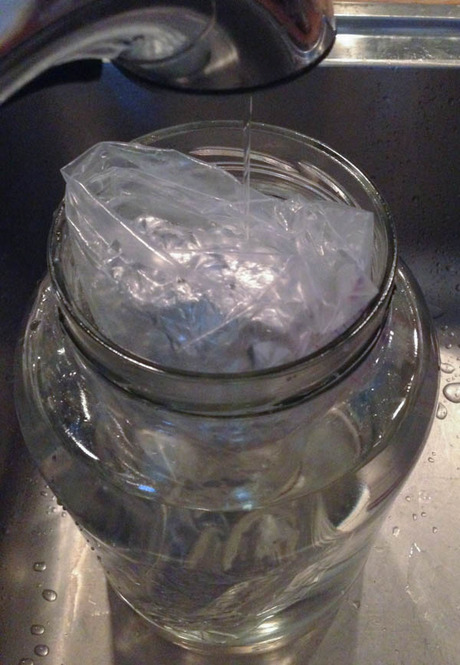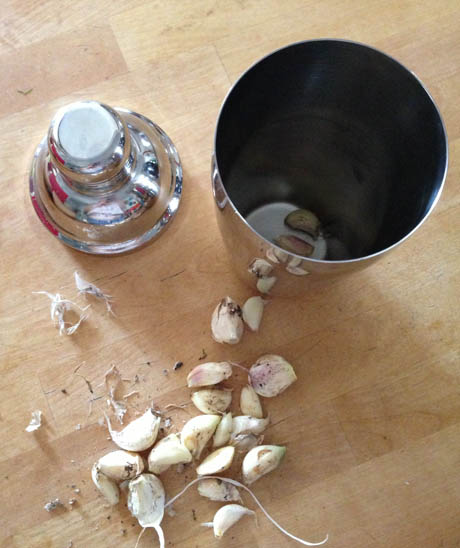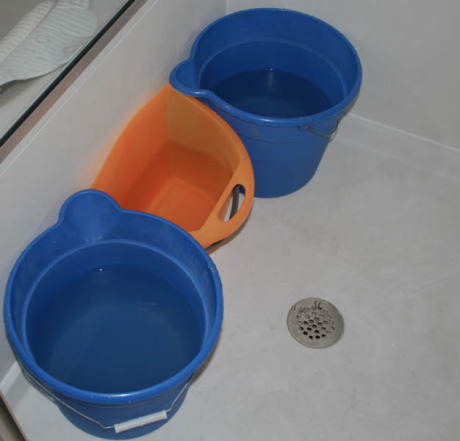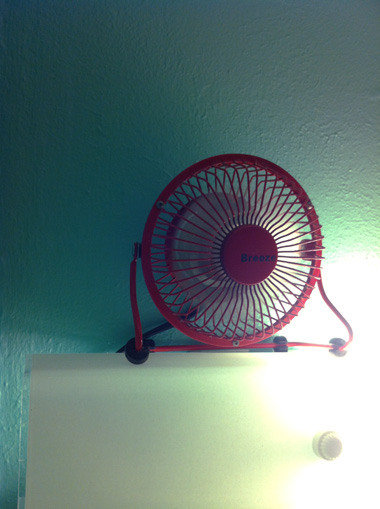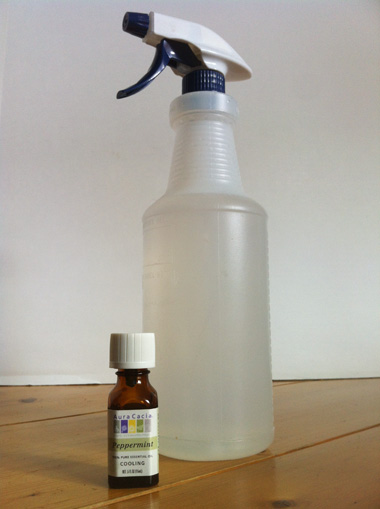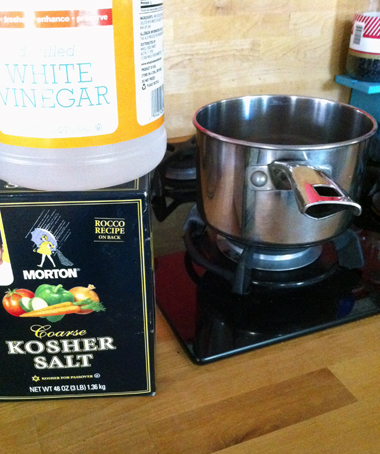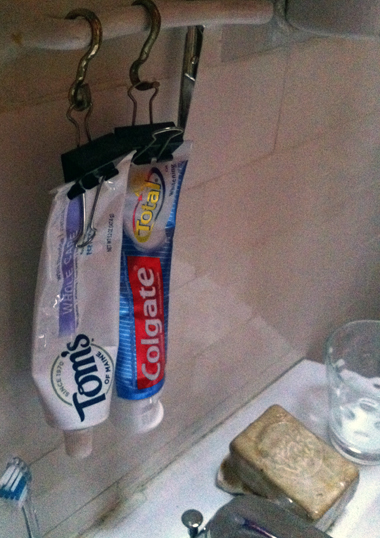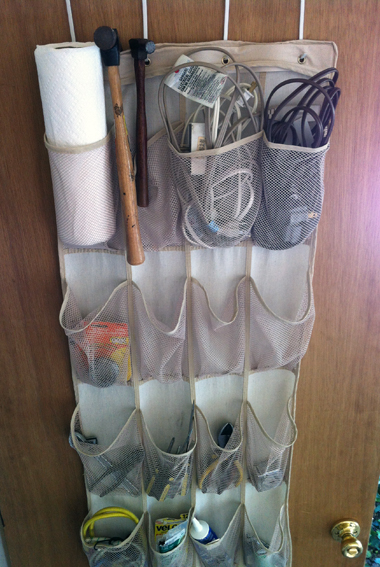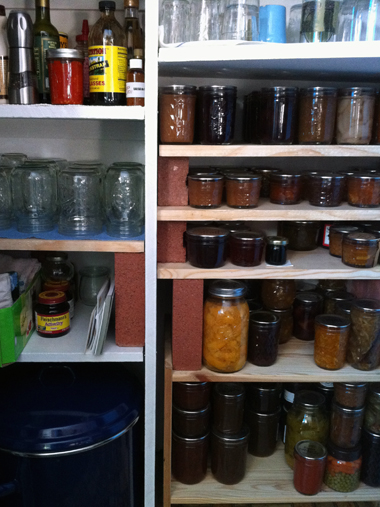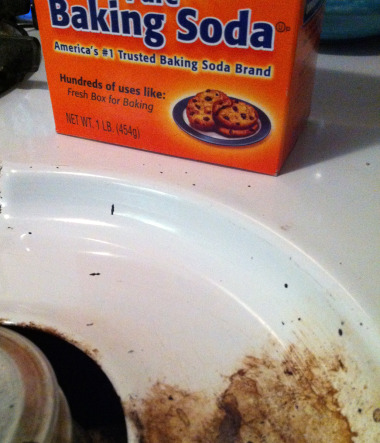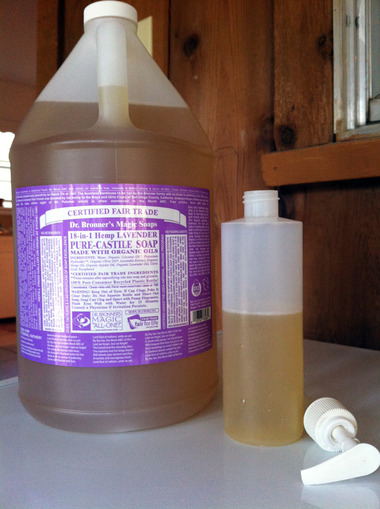The last hip trick was all about freezing stuff, so this week’s post will be about unfreezing. Ah, defrosting. Leisurely defrosting is the kind of thing people who plan ahead do. To be one of those kinds of kitchen people, I strive.
The plan-ahead people will usually safely defrost by just putting something in the fridge and cooking it the next day when it’s fully defrosted. Well, for the non-plan-ahead types, running something under a tiny stream of cold water (for a maximum of 2 hours) is also an acceptable way to defrost, and quickly at that. However, I don’t feel so great about letting all that water trickle down the drain.
I used a gallon jar (another great way to use them around the house) to capture batches of water as we defrosted some fish filets last night. Yes, you have to periodically monitor the progress of the jar, but your houseplants (or trees or garden) will be so happy you did.

